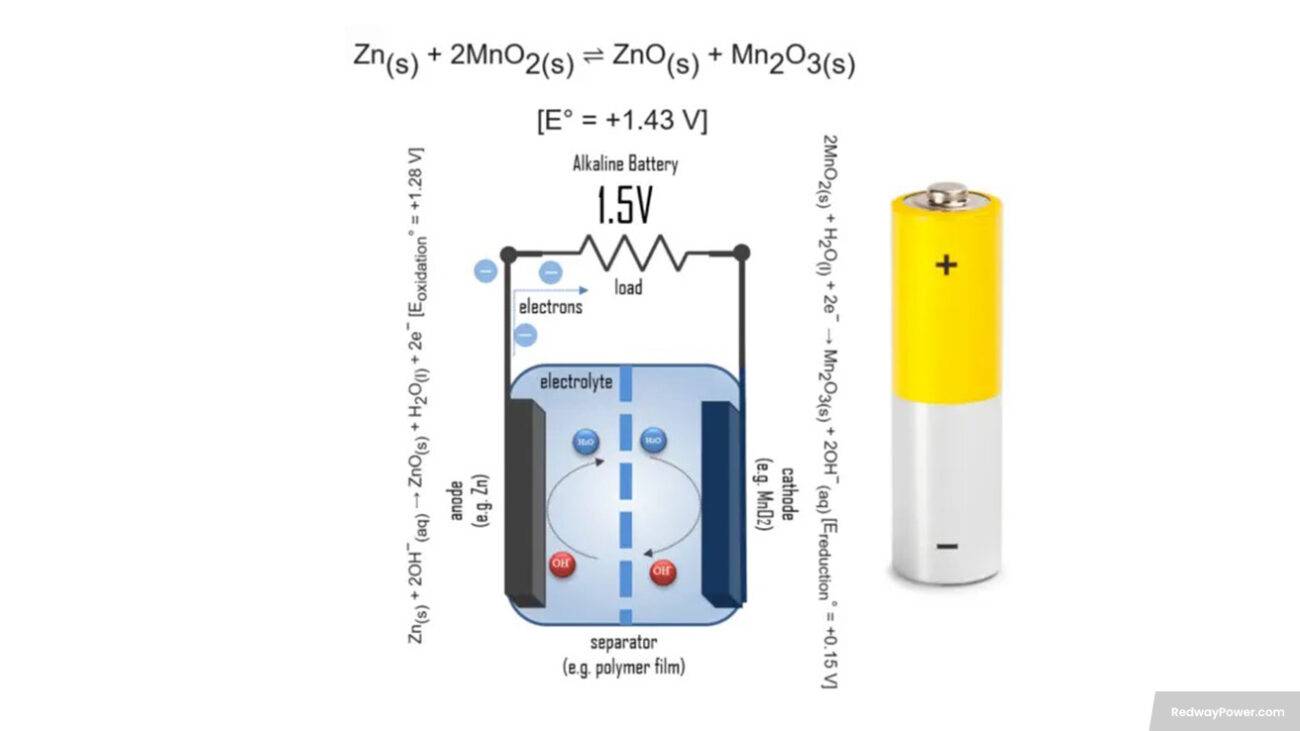- Rack-mounted Lithium Battery
- Golf Cart Lithium Battery
-
Golf Cart Lithium Battery
- 36V 50Ah (for Golf Carts)
- 36V 80Ah (for Golf Carts)
- 36V 100Ah (for Golf Carts)
- 48V 50Ah (for Golf Carts)
- 48V 100Ah (Discharge 100A for Golf Carts)
- 48V 100Ah (Discharge 150A for Golf Carts)
- 48V 100Ah (Discharge 200A for Golf Carts)
- 48V 120Ah (for Golf Carts)
- 48V 150Ah (for Golf Carts)
- 48V 160Ah (Discharge 100A for Golf Carts)
- 48V 160Ah (Discharge 160A for Golf Carts)
-
Golf Cart Lithium Battery
- Forklift Lithium Battery
- 12V Lithium Battery
- 24V Lithium Battery
- 36V Lithium Battery
- 48V Lithium Battery
-
48V LiFePO4 Battery
- 48V 50Ah
- 48V 50Ah (for Golf Carts)
- 48V 60Ah (8D)
- 48V 100Ah (8D)
- 48V 100Ah
- 48V 100Ah (Discharge 100A for Golf Carts)
- 48V 100Ah (Discharge 150A for Golf Carts)
- 48V 100Ah (Discharge 200A for Golf Carts)
- 48V 150Ah (for Golf Carts)
- 48V 160Ah (Discharge 100A for Golf Carts)
- 48V 160Ah (Discharge 160A for Golf Carts)
-
48V LiFePO4 Battery
- 60V Lithium Battery
-
60V LiFePO4 Battery
- 60V 20Ah
- 60V 30Ah
- 60V 50Ah
- 60V 50Ah (Small Size / Side Terminal)
- 60V 100Ah (for Electric Motocycle, Electric Scooter, LSV, AGV)
- 60V 100Ah (for Forklift, AGV, Electric Scooter, Sweeper)
- 60V 150Ah (E-Motocycle / E-Scooter / E-Tricycle / Tour LSV)
- 60V 200Ah (for Forklift, AGV, Electric Scooter, Sweeper)
-
60V LiFePO4 Battery
- 72V~96V Lithium Battery
- E-Bike Battery
- All-in-One Home-ESS
- Wall-mount Battery ESS
-
Home-ESS Lithium Battery PowerWall
- 24V 100Ah 2.4kWh PW24100-S PowerWall
- 48V 50Ah 2.4kWh PW4850-S PowerWall
- 48V 50Ah 2.56kWh PW5150-S PowerWall
- 48V 100Ah 5.12kWh PW51100-F PowerWall (IP65)
- 48V 100Ah 5.12kWh PW51100-S PowerWall
- 48V 100Ah 5.12kWh PW51100-H PowerWall
- 48V 200Ah 10kWh PW51200-H PowerWall
- 48V 300Ah 15kWh PW51300-H PowerWall
PowerWall 51.2V 100Ah LiFePO4 Lithium Battery
Highly popular in Asia and Eastern Europe.
CE Certification | Home-ESS -
Home-ESS Lithium Battery PowerWall
- Portable Power Stations
How Many Volts is a Car Battery?

A car battery typically operates at 12 volts, providing the necessary voltage to power the vehicle’s electrical components. This voltage is sufficient for starting the engine and running the various electrical systems of the car, such as the lights and radio
Get Your Custom B2B Quote for Car Starter Battery: Click HERE.
What is a voltage and its significance in car batteries?
Factors that affect voltage in car batteries
Average voltage of a car battery
When to check the voltage of your car battery?
How to measure the voltage of a car battery?
Proper maintenance for maintaining voltage levels
Proper maintenance is crucial for ensuring your car battery maintains optimal voltage levels. To start, regularly check the battery terminal connections to ensure they are clean and free of any corrosion. Dirty terminals can impede the flow of electricity, affecting voltage output.
In addition, make sure to secure the battery properly in place to prevent vibrations that can lead to internal damage and decreased voltage. Inspect the battery casing for any signs of physical damage or leakage which can impact its performance over time.
Furthermore, avoid draining your battery excessively by turning off all lights and accessories when the engine is not running. Consider investing in a trickle charger if you don’t use your vehicle frequently to keep the battery charged at all times.
By implementing these simple maintenance practices, you can help prolong the life of your car battery and maintain its voltage within the optimal range for reliable starting power!
When to replace a car battery?
A car battery should be replaced when its voltage consistently drops below 12.4 volts. A fully charged car battery typically has a voltage reading of around 12.6 to 12.8 volts. If the voltage falls below this range, it may indicate that the battery is starting to lose its charge and may not provide reliable performance. Factors such as age, weather conditions, and usage patterns can affect the voltage and lifespan of a car battery. Regularly checking the battery voltage and considering these factors can help determine the optimal time for battery replacement and ensure reliable starting and optimal performance of your vehicle.

FAQs
When to measure the voltage of a car battery? The voltage of a car battery should ideally fall between 12.6 and 12.8 volts. If the voltage exceeds 12.8, it is advisable to drain the battery slightly by using the electrical components before starting the engine. Conversely, if the voltage falls below 12.6, the battery may require charging. Regularly checking the voltage helps ensure optimal battery performance and extends its lifespan.
What voltage is too low for a car battery?
A car battery voltage is too low if it measures below 12.45 volts, indicating a charge level of 75% or less. If the voltage measures below 11.6 volts, it is a clear indication that the car battery needs to be replaced. Recharging a car battery with low voltage is recommended before considering a replacement. It’s important to note that these voltage thresholds apply to standard 12-volt car batteries.
At what voltage is a car battery dead?
A car battery is considered dead when its voltage falls below 12 volts. At this voltage level, the battery does not have enough power to start the car. It is important to consider all key factors, such as the age and condition of the battery, before determining if a replacement is necessary. If your car battery voltage is below 12 volts, it may be time to consider replacing it to ensure reliable starting and optimal performance.
Is 11.9 volts enough to start a car?
Starting a car with a voltage of 11.9 volts is generally not enough to reliably start the vehicle. While it may start once or twice at that voltage level, continued cranking will quickly drain and damage the battery. To ensure consistent starting, car batteries should be maintained at a minimum voltage of 12.4-12.6 volts. Factors such as battery condition, temperature, vehicle condition, and engine size can influence starting capability at lower voltage levels. It is recommended to have at least 12 volts to reliably start a car and avoid potential battery damage.
What is the typical voltage of a car battery?
When should I check the voltage of my car battery?
Get Your Custom B2B Quote for Car Starter Battery: Click HERE.
How do I measure the voltage of my car battery?
What is considered a fully charged voltage for a car battery?
Can extreme temperatures affect car battery voltage?
What are the safety precautions when measuring car battery voltage?

How often should I check my car battery voltage?
What does a voltage reading below 12.6 volts indicate?
Why is monitoring car battery voltage important?
Is voltage the only factor to consider for a healthy car battery?
Get Your Custom B2B Quote for Car Starter Battery: Click HERE.
How is wattage calculated in relation to car batteries?
To calculate wattage in relation to car batteries, use the formula: Wattage = Amps x Voltage. For instance, a standard car battery rated at 45 amps per hour, when computed over a 20-hour period, can deliver 2.25 amps at an average of 12V, resulting in a wattage of 540W. By multiplying the amps by the voltage, you can determine the wattage output of a car battery.
What is the difference between voltage and amperage in car batteries?
The difference between voltage and amperage in car batteries lies in their functions. Voltage represents the electrical potential difference or the force that moves electrons, while amperage, also known as current, refers to the flow of electrons through a conductor. Voltage can be likened to the ‘pressure’ of electricity, while amperage is the volume of electricity generated. Understanding this distinction is crucial for comprehending the behavior and capabilities of car batteries.

How many cells do 12-volt batteries have?
A 12-volt battery is composed of six cells connected in series. Each cell generates 2 volts of electricity. By connecting these cells together, a 12-volt battery is formed. These batteries are commonly used in various applications, including automotive and marine industries, to provide the necessary power for starting engines and running electrical systems.
Why are most vehicle batteries either 12 or 6 volts?
Most vehicle batteries are either 12 or 6 volts. The standard 12-volt batteries are widely used because they work well for most applications. They are compatible with the electrical systems of vehicles and provide sufficient power. 6-volt batteries are utilized in specific applications, such as older vehicles or specialized equipment like golf carts. The choice of voltage depends on the specific requirements and compatibility with the electrical systems of the vehicle.
How much electricity do car batteries produce?
On average, car batteries typically last between 3 to 4 years. However, the lifespan of a car battery can vary depending on factors such as usage, climate, and maintenance. Some batteries may last as long as 6 years, while others may need to be replaced after only a year or two. It’s important to consider these factors and monitor the battery’s performance to determine when a replacement is needed.
What are the safety tips when doing a load test on a car battery?
- Wear Safety Gear: Use gloves and safety glasses to protect against acid spills and sparks.
- Ensure Ventilation: Conduct the test in a well-ventilated area to avoid inhaling harmful gases.
- Avoid Sparks: Keep metal objects away from battery terminals to prevent sparks and shorts.
- Follow Instructions: Use a load tester correctly, following the manufacturer’s guidelines to ensure accurate and safe results.
What are the different voltage levels indicating different charge states of a car battery?
- 12.6V or above: Fully charged
- 12.4V to 12.6V: Moderately charged, needs charging soon
- 12.0V to 12.4V: Low charge, battery is weak
- Below 12.0V: Deeply discharged, battery may need replacement
What should the voltage of a car battery be with the engine off?
With the engine off, a fully charged car battery should read approximately 12.6 volts. This indicates a healthy charge level.
What should the voltage of a car battery be with the engine running?
With the engine running, the voltage should be between 13.7 and 14.7 volts. This range indicates that the alternator is properly charging the battery.
What is the ideal car battery voltage?
The ideal voltage for a fully charged car battery is around 12.6 volts with the engine off and between 13.7 to 14.7 volts with the engine running.
How can Car Care Joondalup help with car battery testing and replacements?
Car Care Joondalup provides professional battery testing to assess your battery’s health and performance. They also offer battery replacements, ensuring you receive a suitable battery for your vehicle’s needs, and can handle installation and disposal of old batteries.

























